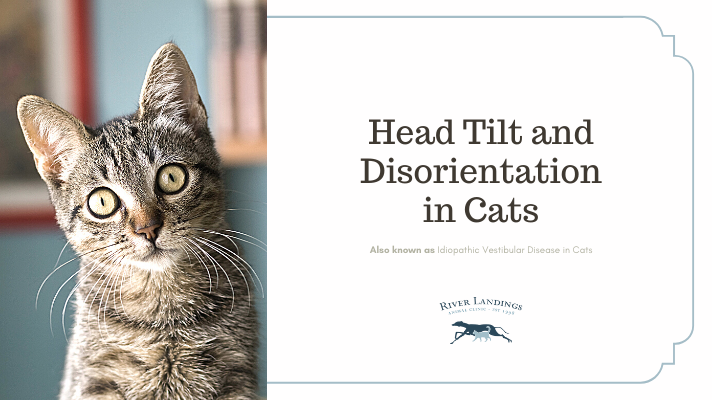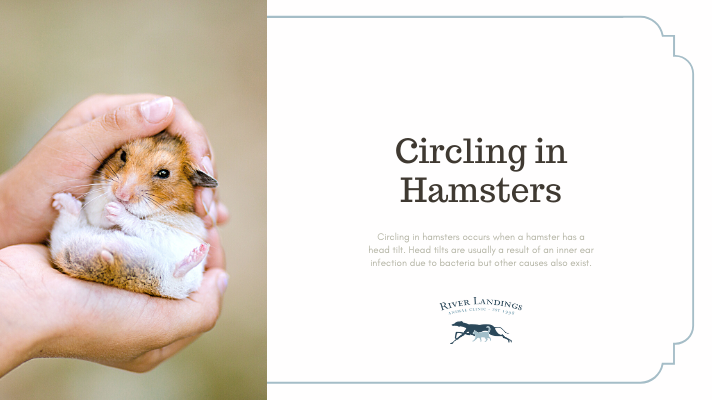Idiopathic Vestibular Disease in Cats
Head tilt is a medical condition that may be indicative of a serious underlying disorder, usually of the vestibular system. If a cat is tilting its head frequently to either side of the body (away from its orientation with the trunk and limbs), this is an indication that the cat feels imbalanced. The cat may even struggle to retain a balanced posture and fall.
A common cause of head tilting in cats are disorders of the vestibular system, a sensory system located in the inner ear which provides information needed to hold the body in an upright position and move about confidently. In essence, the vestibular system "tells the body where it is in relation to earth— whether it is upright, up-side-down, moving, being still, etc.
Symptoms and Types
Abnormal head posture
Head tilt to either side
Stumbling, lack of coordination (ataxia)
Constantly falling over
Eye movements erratic, apparent inability to focus
Circling (turning in circles)
Nausea, vomiting
Causes
Although the underlying cause for vestibular disease is unknown, the following factors may contribute to the condition:
Ear injury
Brain disease
Metabolic diseases
Neoplasia (abnormal tissue growth)
Nutritional deficiencies (e.g., thiamine deficiency)
Toxicity (e.g., use of toxic antibiotics in the ear)
Inflammation of the central and inner ear canal due to bacterial, parasitic, or other type of infection
Diagnosis
Your veterinarian will perform a complete standard physical exam, including a blood chemical profile, a complete blood count, a urinalysis and an electrolyte panel. You will also need to give a thorough background history of your cat's health leading up to the onset of symptoms. The results of the blood tests are usually normal, though changes may be present depending on whether there is an existing disease, such as an infection. Further tests will be required to diagnose underlying systemic diseases like thyroid problems, and infections.
Nutritional status will be evaluated, and you will need to recount your cat's normal diet, along with supplements or additional foods you may have fed to your cat. Thiamine deficiency, for example, can be the result of feeding your cat food that does not have B1, the source for thiamine, in its ingredients. Thiamine deficiency can also result from over consumption of raw meats and fish.
To determine if an ear infection is present, your veterinarian will thoroughly examine your cat's ear canal and will take a sample of the material present within the ear canal for further testing. Visual diagnostic tools, X-rays, computed tomography (CT), and magnetic resonance imaging (MRI) may be required to confirm a middle ear disease. Another important test used to diagnose this disease is a cerebrospinal fluid (CSF) analysis. (CSF is a clear, watery liquid that surrounds and protects the brain and spinal cord.) The results of a CSF analysis is useful in the diagnosis of inflammation and/or infection within brain. A bone biopsy may also be performed is an advanced test to confirm the involvement of the bone due to tumor or infection.
Treatment
In case of severe disease, your cat may need to be hospitalized for treatment and supportive care. Fluid replacement therapy is required in patients with fluid deficits due to frequent vomiting. These patients don’t require a special diet except in those cases where some nutritional deficiency is present. For example, thiamine supplements are often required in patients with head tilt due to thiamine deficiency.
In some cases, surgery is required to treat the underlying disease. If an ear infection is present, your veterinarian will prescribe broad-spectrum antibiotics that can enter and eradicate the infection in the brain and middle ear.
Living and Management
The prognosis is highly variable depending on the underlying disease. If the head tilt is due to involvement of the ear, chances for complete recovery are fairly high. In some cases, head tilt may persist. You will bring your cat to your veterinarian for regular follow-up examinations. Follow treatment guidelines strictly and give medications at proper doses and time. Incorrectly medicating your animal is one of the most preventable accidents with pets. In addition, do not use any drug of your own, or any drug that has not been approved by your veterinarian, especially in the ear, as it may complicate symptoms further.
Hear From Us Again
Don't forget to subscribe to our email newsletter for more recipes, articles, and clinic updates delivered straight to your e-mail inbox.
Related Categories:



